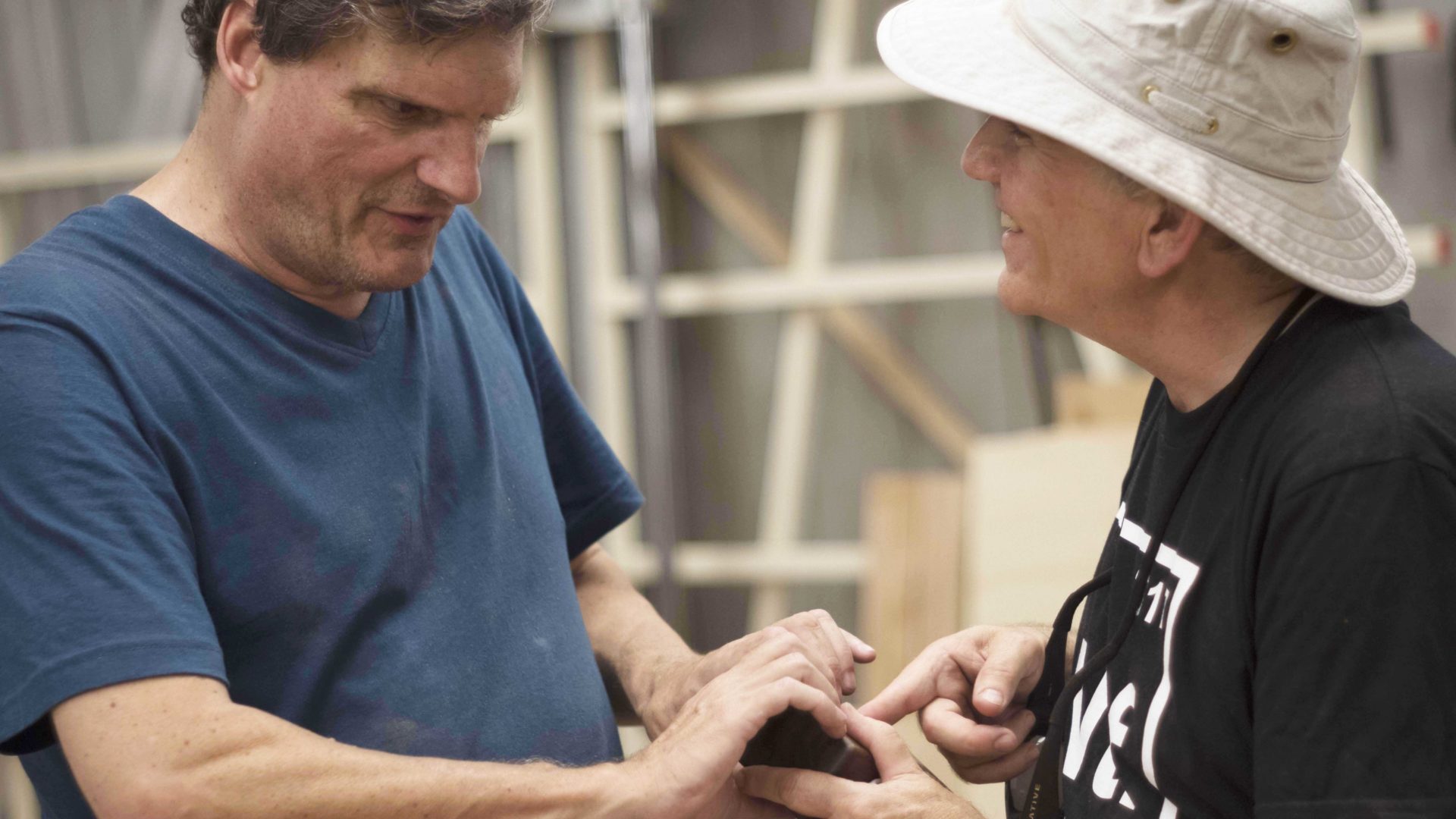While we do not want to limit anyone, there is a lot of woodworking knowledge to be learned, a lot to disclose, and most of us cannot take it all in at once. Moreover educators not only need to foster knowledge inside an individual, they often need to diffuse that knowledge across a group. Progressive disclosure asks instructors to be thoughtful about how knowledge spreads from individuals to groups.
Groups of sighted learners might gather around a single tool and visually observe as the instructor operates it. They come away with a rough idea of how to use it. Visually impaired woodworking students often prefer a verbal description and hands-on lessons. The number of students that can perceive tactile tool training simultaneously is limited. This means that rather than disclosing lessons to groups of students, it can be helpful to develop tactics that disclose lessons progressively, first into an individual student, and then through that student across a group.
When a single student has knowledge disclosed progressively, bit by bit, it means they have time to master a small, micro-skill of woodworking. Each micro-skill is woodworking is in practice a chunk of work. Once a student masters that chunk they can teach, or, “disclose,” it to another student. In turn that student can exchange their micro-skill. This form of progressive disclosure not only reinforces learning, it means that multiple hands-on lessons can happen at once in the same shop. Instead of students gathered around one instructors, they are in groups, around each other. It also reduces the number of faculty needed.
In the video below, one student is teaching another one how to use a table router.
